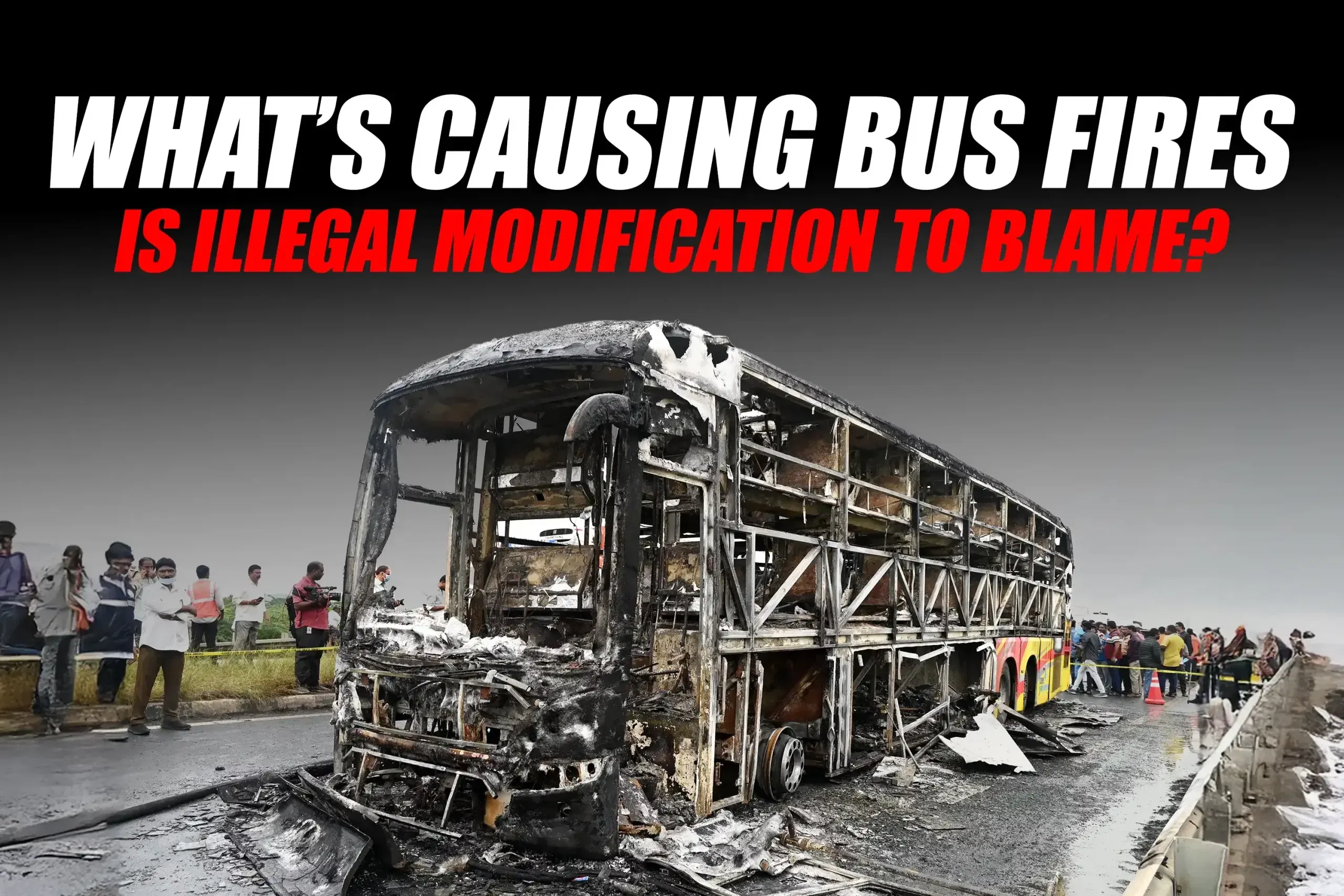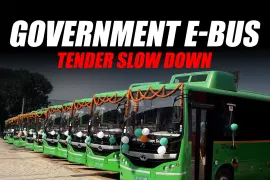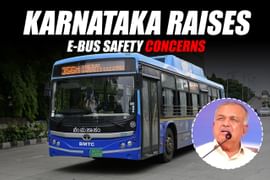India’s roads carry millions daily. However, several of those journeys have ended in flames. The causes behind this phenomenon are complex, yet they usually begin with a simple act: illegal modifications to buses. Modifications made without proper vehicle certification void the bus's original safety design, making fires more likely.
In Jaisalmer, one such converted bus caught fire in 2025. It had only one operable exit. The cabin got filled with smoke in seconds and people failed to escape. In Kurnool, another illegally modified bus caught fire due to a short circuit in the AC wiring in 2025. Both incidents show the same failure changes made for comfort or profit, without safety in mind.
How Changes Produce Fire Danger
Everything in a bus such as seats, wiring, roof, or insulation-serves a purpose. When that balance is offset, safety collapses. Illegal modification disrupts this balance in many ways.
- Electrical Overload: Lights, inverters and chillers that are not certified overload the system. Wires heat up, melt and ignite adjacent material.
- Blocked Exits: Excessive seating or panels are inhibiting the rear door. Passengers will not have an escape route in the event of fire.
- Use of Flammable Materials: Foam, vinyl and curtains that are not flame-retardant will combust quickly and give off toxic smoke.
- Lack of Fitness Checks: Many buses operate with out-of-date registration status. Modifications of structure have never been checked for safety.
Each of these changes may appear minor, but together they create a lethal environment, where a spark becomes a blaze in seconds.

Why Oversight Fails
There are regulations in place. The Bus Body Code and Motor Vehicles Act have all the specifications on how a bus should be made or maintained. Still, there is poor implementation. Scores of local workshops remodel buses without certification. They add seats, wires, or decorative panels without seeking engineers.
Inspections assess documents, not conditions and once a bus has its first permit, it runs for years without a comprehensive and systemic safety inspection/refurbishment. After even an accident, investigations rarely lead to long-lasting change. This gap between law and practice allows unsafe buses to continue on the road.
- Retrofit monitoring: Changing the bus design and configuration is treated differently from regular inspections.
- Electrical safety: Overloaded circuits (e.g., passengers charging drained phones, etc.) continue to be the primary cause of bus electrical fires in India.
- Emergency access: The extra berths often block exits and raises the possibility of evacuating, especially in case of a fire.
- Body Design Violations: Conversion of a bus from a seater to a sleeper changes its fire-resistance profile.
- Accountability: Through infrequent follow-up audits, owners and body-builders are able to escape penalties.
When each of these issues goes unchecked, they together contribute to creating fire disasters in the near future.
The Way Forward
India needs rigorous and sustained action. Authorities must treat every illegal modification as a serious safety threat, not a minor paperwork problem.
- Certified electrical audits: Additional equipment installed should be at par with the safety standards set up by BIS.
- Emergency preparedness: Buses must be equipped with extinguishers, hammers and visible exit instructions.
- Operator education: Workshops should train staff in safe retrofitting techniques.
Safety grows when there is shared responsibility on the part of authority, operator and passenger alike.
Conclusion
Illegal bus modifications are not mere shortcuts. They are calculated violations that put lives at risk. Every bolt, every wire in a bus is designed for a purpose; when that design is ignored, tragedy follows. Recent fire accidents in India remind us that there is a price for neglect. If laws remain on paper and if enforcement remains weak, then buses will continue to turn into traps. The road ahead calls for discipline, transparency and moral accountability. Buses should carry people safely-not stories of loss and grief.
For more articles and news, stay updated with 91trucks. Subscribe to our YouTube channel and follow us on Facebook, Instagram and LinkedIn for the latest videos and updates from the automotive world!
Related Stories:
Rajasthan to Set Up its First E-Bus Manufacturing Unit in Ghilot, Kotputli-Behror
Why Big OEMs’ Low Interest Stalls Government’s E-Bus Tender Progress?









